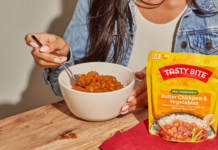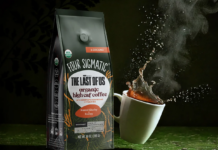
The initial effects of COVID-19 on the pet food industry included a spike in food sales — online and in stores — as consumers rushed to stock up. And, in response, pet food and treat brands ramped up production and suffered supply chain disruptions.
Now, three months later, pet food companies are still navigating these challenges, but they’ve had some time to adjust their strategies to weather the storm.
Pet Food Processing recently conducted a survey to find out how the situation has impacted pet food and treat manufacturers so far and what those companies expect to see on the horizon.
Boosting production
Almost half (44%) of pet food and treat companies said they’ve increased production compared to the same time last year. Another 16% have not seen notable production changes, while others saw significant (22%) or minimal (12%) reductions in production. The last 6% noted that their numbers are close to last year’s, yet they’ve encountered a “wide fluctuation in demand.”
Fortunately, most respondents (81%) haven’t experienced production interruptions as a result of COVID-19 challenges. The other 19% said they had to temporarily shut down because of employee safety concerns, labor shortages, and delays in loan assistance.
Shifting to e-commerce
E-commerce is the clear winner in terms of driving sales during the public health crisis. The majority (58%) of pet food companies experienced a jump in e-commerce sales from March to May.
Although some respondents also reported sales increases in mass market, distributor, pet specialty retail, and convenience store channels, these sales have started to even out or decline while online sales continue to climb. Over the course of the next few months, nearly 65% of survey respondents said they’re anticipating strong e-commerce sales, while fewer expect improvements in pet specialty sales (36%) and distributor sales (26%).
In response to the demand for online ordering, 26% of survey participants rolled out e-commerce capabilities, either via their own online store or a third-party platform. Our COVID-19 survey revealed similar results — some pet food industry respondents noted that they had opened up a website to accept online orders, focused on selling through online retailers like Amazon and Chewy, or shifted more products toward direct-to-consumer sales.
Facing more supply chain challenges
For many pet food and treat processors, supply chains have been unreliable since late March. Although 50% of the companies in Pet Food Processing’s report saw no supply chain disruptions at the end of March, that percentage dropped to 23% over the past three months.
Only 43% of respondents experienced disruptions in their ingredient supply chains in late March, but that has since jumped to 71%. During the three-month period, there were also disruptions in packaging materials (26%), equipment (10%), and product distribution (47%).
In our COVID-19 survey, some pet food manufacturers noted that they were focused on strengthening their supply chains as a result of these challenges.
Prioritizing employee safety
Pet food companies have taken several steps to ensure the safety of their workforce, including enforcing social distancing, mandating personal protective equipment, and strengthening sanitation procedures. Many of the respondents in Pet Food Processing’s survey have also taken the following measures:
- Allowing employees to continue working from home, if eligible (67%), or offering remote work as an option (10%)
- Restricting facility access to only essential personnel (94%)
- Limiting employee travel (80%)
Respondents plan to keep these extra precautions in place for at least six months (54%), 12 months (21%), or indefinitely (32%).
Some of the pet industry processors and partners in our survey (26%) had to lay off employees due to the pandemic, but most (92%) said they were allowing at least some percentage of their employees to work remotely.
Planning for the future
The next several months carry a lot of uncertainty for pet food industry companies. Many processors anticipate prolonged challenges related to supply, staffing, e-commerce competition, and sudden changes in demand.
More than a third (38%) of the processors in Pet Food Processing’s survey expect heightened demand to continue through mid-August. And 28% said they’re prepared to face an unpredictable market and demand in the months ahead.
However, despite the concerns, those working within or serving the pet food industry seem to be optimistic about the future. Our survey found that 56% of pet industry respondents expect to emerge from the pandemic stronger than before. Only 21% predicted they’d emerge weaker, while 23% believed their companies would come out unchanged.








